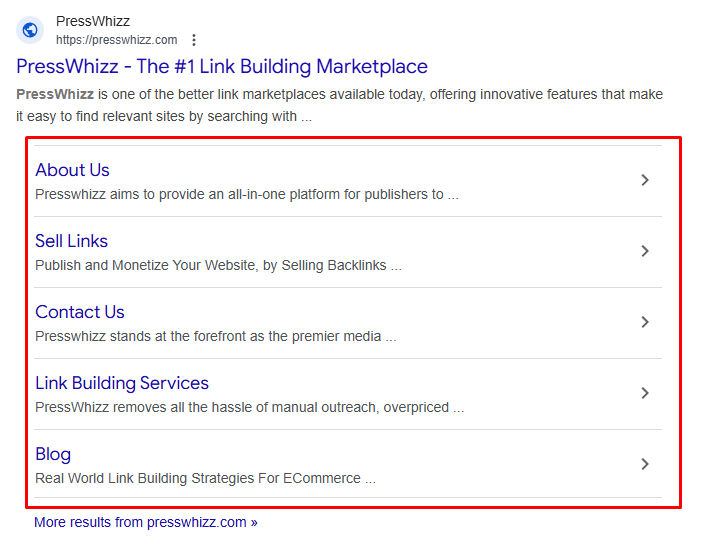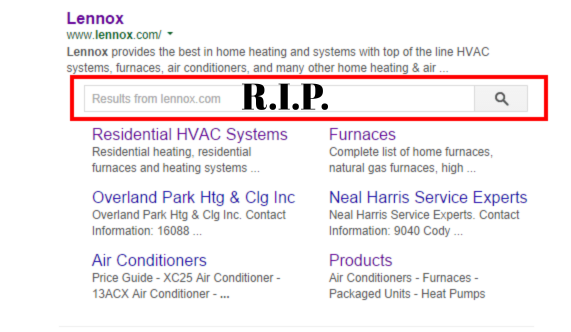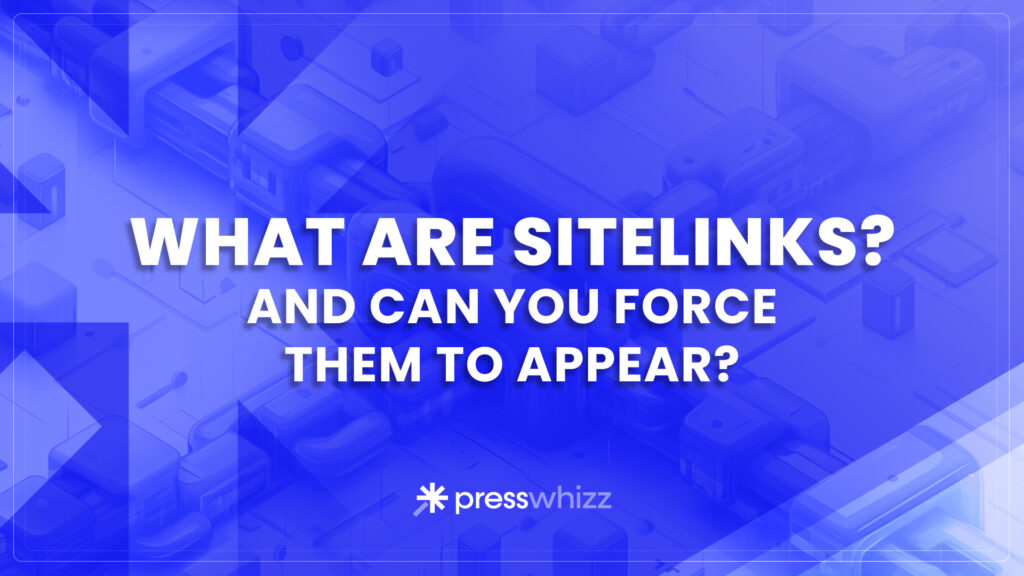Google doesn’t give you much control. But sitelinks are one of the rare organic features that let you have some room to optimize for, gain more SERP realty and protect your brand all in one.
There isn’t a direct feature inside Google Search Console, or any specific setting, it’s more about how you structure your site, the CMS you are using and how much the bot and algorithm can actually understand.
With all that being said, the control you have is still often limited by geo/location, topicality, niche and the brand itself…
In this post, I aim to show you:
- What sitelinks really are (and why they matter).
- The different sitelink types in 2025.
- How Google chooses them (and how you manipulate those signals).
- Grey/black hat tricks to push the sitelinks you actually want.
So without any further ado, let’s jump into it!
What Are Sitelinks?
Sitelinks are extra links Google shows under a search result, usually your homepage, that point to other key sections of your site.
As an example, here PressWhizz sitelinks that Google are showing when searching our brand name:

They’re designed to “help users navigate faster” (Google’s PR wording), but in reality:
- They give your brand more real estate on page one.
- They push competitors further down.
- They increase click through rates, e.g. Ahrefs’ own data showed 12.9% of their branded clicks go to sitelinks, not their homepage.
That’s an additional traffic optimization opportunity that you want to be taking advantage of, and researching for.
Even people don’t properly record and analyze these types of SERP features outside when looking at how to build or optimize campaigns. When a lot of the time, incremental improvements in SEO can lead to the most substantial overall increases.
Different Types of Sitelinks
Google has been playing with sitelink formats for almost 20 years at this point, and there have been a lot of additional features surrounding sitelinks that have come and gone over the years. If anyone has been following me for a very long time, they’ll remember my authorship manipulation from back in the day.
Here’s what is live right now though:
- Full Organic Sitelinks (6-packs)
- Triggered on branded searches.
- Shows up to six internal links under your root domain, and usually at least two.
- One-Line / Carousel Sitelinks
- Appear on non-branded, informational queries.
- Can pull headings, jumplinks (#anchors), or related subpages.
- Paid Sitelinks (Ad Extensions)
- 100% controllable inside Google Ads.
- The only sitelinks you can choose the URL/text for.
- Not SEO-related of course, and won’t change your organic sitelinks.
And finally, for anyone who remembers the search boxes appearing under blue URLs in Google, unfortunately, they deprecated the structured data last year in October, 2024…

We’ve also seen in general, a reduction in sitelinks showing over the past few years outside of branded queries. So optimizing for them gives you a double edged sword vs. competitors who don’t and will likely miss out on a ton of traffic as a result.
Why You Want Sitelinks
Forget the corporate fluff. Here’s why they matter:
- CTR Boost → You’re not just one blue link. You’re eight. You look like the obvious click.
- Authority Signal → Users subconsciously associate sitelinks with “big brands.”
- Traffic Control → Instead of people bouncing via “Contact” or “Pricing” in your nav, you funnel them directly from SERPs.
- ORM Defense → If your sitelinks are clean, you bury negative reviews or forum chatter.
67% of Wikipedia’s keywords trigger sitelinks. Why? Because Google trusts the structure. If you want your site to look like “the Wikipedia of your niche,” sitelinks are part of the equation.
How Google Chooses Sitelinks
You cannot log into Search Console and pick them anymore (Google killed “demotions” years ago). But you can influence sitelinks with the right setup:
- Site Structure
- Clear, hierarchical architecture.
- Avoid flat structures where every page looks equal.
- Your nav + breadcrumb trails matter.
- Internal Linking
- Anchor text consistency → pages with strong, repeated anchors often become sitelinks.
- Location matters → links in nav, footer, TOCs carry weight.
- Headings & TOCs
- Google lifts H2/H3 anchors as one-line sitelinks.
- Table of contents = bonus sitelink triggers.
- Popularity Signals
- Pages that attract searches + clicks around your brand (e.g., “[brand] pricing”, “[brand] login”) tend to become sitelinks.
- Relevance by Geo/Language
- Hreflang tags influence sitelinks shown per country.
- User Signals (maybe)
- Bing’s patent confirms they use click data.
- Google hasn’t admitted it, but my testing shows high CTR on certain brand navigations correlates with sitelink shifts.
2025 Algo Reality Check
Post-2024 Core Updates, Google doubled down on authority + trust signals. What does that mean for sitelinks?
- Authority Sites Win More Space → If your domain is strong (DR40+ range), expect sitelinks on almost every branded query.
- Thin Sites Rarely Trigger → New AI-content sites won’t get them without serious link authority.
- International SERPs Are Looser → Non-English sitelinks are still easier to manipulate.
How To Earn Sitelinks For Your Brand
Forget praying to the Google gods like a lot of SEOs will tell you, you can stack the deck in your favour easily.
Here’s my exact playbook for every site build:
1. Fix Your Architecture
Google loves order. If your site looks like a messy flat file dump, you’ve already lost. Build hierarchy:
-
Homepage → Category → Subcategory → Product.
-
Use breadcrumbs. They’re not just UX fluff, they’re sitelink triggers.
-
Keep URLs clean and keyword-driven, no random IDs or parameters.
2. Internal Link Aggressively (But With Strategy)
Your nav and footer matter, but Google isn’t stupid. Contextual links inside content send stronger signals.
-
Hit your money pages with consistent anchor text (“Pricing”, “Features”, “Case Studies”).
-
Use tables of contents with #anchors, those often become one-line sitelinks.
-
Reinforce the same anchors across pages. Consistency beats creativity here.
3. Build Branded Search Demand
Google won’t show sitelinks if no one searches your brand. Manufacture demand.
-
Run cheap ads on your brand name.
-
Push press releases, podcasts, and news mentions (entity stacking).
-
Social campaigns: get people searching “[brand] pricing” or “[brand] login”. These search patterns shape sitelinks.
4. Entity Stack & Link Build
Authority = sitelinks. Simple as that.
-
Nail foundational citations, Crunchbase/Wiki/PR mentions.
-
Push links to your “must-have” pages. If you want “Pricing” to show, feed it external juice.
-
Don’t sleep on pillow links. They offset toxicity and pad out the profile.
5. Track, Don’t Guess
You’re not done until you monitor.
-
Use Google Search Console’s “Search Results” report. Look at branded queries → what sitelinks are showing.
-
Pull Ahrefs → see what pages are cannibalizing traffic. Sometimes sitelinks surface from pages you didn’t expect.
6. Prune / Promote Ruthlessly
If Google is surfacing junk (old blog, careers page, irrelevant subcategory), kill it.
-
Noindex or 301 → you control the flow.
-
Reinforce the winners: more internal anchors, more external links, more demand signals.
-
For ORM, spin up decoy pages. Let “Contact” or “Careers” soak up the slot instead of a negative review page.
7. Scale + Manipulate
-
CTR manipulation still works. Drive clicks on “[brand] + [page]” queries and watch Google swap sitelinks.
-
Parasite SEO twist: Get your parasite page ranking for your brand query, enabling more ORM control.
How To Force / Kill Specific Sitelinks
Google may act like sitelinks are some magical, untouchable feature, but the truth is you can absolutely rig which pages get pulled in, or booted out.
It’s not a neat toggle in Search Console, it’s a game of pushing the right signals and starving the wrong ones. If you know how to feed Google the breadcrumbs it craves, you can force your money pages into sitelinks, bury the garbage, and even deploy decoys when ORM’s on the line.
To Push Pages In:
- Nail anchor text internally (“Pricing”, “Features”, “Case Studies”).
- Build external links to those URLs — trust flow pushes them up.
- Increase search demand around “[brand] + [page]”. Yes, CTR manipulation still nudges sitelink configs if you’re aggressive.
To Kill Pages Out:
- Noindex → removes from sitelinks completely.
- Change internal anchors → stop reinforcing junk pages.
- 301 old pages to better targets.
- Nuclear option: delete the page.
Final Thoughts
Google sitelinks are not optional. They’re a visibility cheat code.
You can sit back and “hope” Google picks nice links, or, you can manipulate the exact pages you want showing.
Smart SEOs are treating sitelinks as brand-SERP real estate to optimize, not just observe.
The difference?
One brand looks like a startup.
The other looks like the Wikipedia of their industry.
Which do you want to be?

